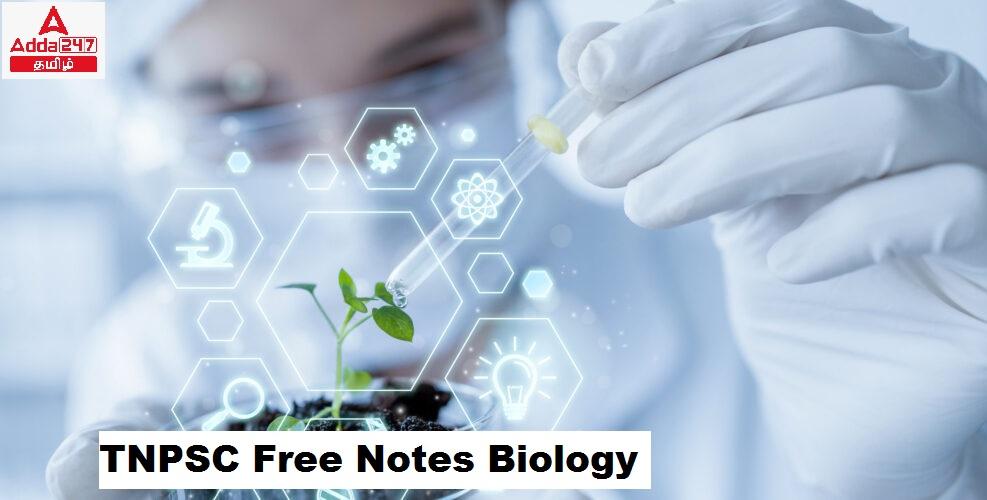இந்தக் கட்டுரையில், TNPSC குரூப் 1, குரூப் 2, குரூப் 2A, குரூப் 4 மாநிலப் போட்டித் தேர்வுகளான TNUSRB, TRB, TET, TNEB போன்றவற்றுக்கான முறைகள் இலவசக் குறிப்புகளைப் பெறுவீர்கள்.தேர்வுக்கு தயாராவோர் இங்குள்ள பாடக்குறிப்புகளை படித்து பயன்பெற வாழ்த்துகிறோம்.
Vertebrata
Class: Cyclostomata
(G.cyklos–circle; stomata -mouth)
All members of cyclostomata are primitive, poikilothermic, jawless
aquatic vertebrates and are ectoparasites on some fishes.
Body is elongated and eel like.
They have circular mouth. Skin is slimy and scaleless.
Heart is two chambered and circulation is of closed type.
Cyclostomes are marine but migrate to fresh waters for spawning (
anadromousmigration)
Examples:
Petromyzon (Lamprey) and
Myxine (Hag fish)
Class: Pisces
Fishes are poikilothermic (cold-blooded), aquatic vertebrates with jaws.
The streamlined body is divisible into head, trunk and tail.
Locomotion is by paired and median fins.
Their body is covered with scales.
Respiration is through gills.
The heart is two chambered with an auricle and a ventricle.
There are two main types of fishes.
1. Cartilaginous fishes, with skeleton made of cartilages e.g. Sharks, Skates.
2. Bony fishes with skeleton made e.g. Carps, Mullets. The smallest
vertebrate, Philippine goby/dwarf goby gmy goby is a tropical species
fish found in brackish water and mangrove areas in south East Asia,
measuring only 10 mm in length.
Class: Amphibia
(amphi- both; bios- life) (G. amphi-both; bios -life)
These are the first four legged (tetrapods) vertebrates with dual adaptation
to live in both land and water.
The body is divisible into head and trunk.
Their skin is moist and have mucus glands.
Respiration is through gills, lungs, skin or buccopharynx.
The heart is three chambered with two auricles and one ventricle.
Eggs are laid in water. The tadpole larva transforms into an adult. e.g-
Frog, Toad.
Kidneys are mesonephric.
Examples:
Bufo (Toad), Rana (Frog), Hyla (Tree frog), Salamandra (Salamander),
lcthyophis (Limbless amphibians)
Class: Reptilia
(repere- to crawl or creep) (L. repere or reptum – to creep or crawl)
They are mostly terrestrial animals and their body is covered by dry, and
cornified skin with epidermal scales orscutes.
Respiration is through lungs.
The heart is three chambered with an exemption of crocodiles, which have
four-chambered heart.
Most of the reptiles lay their eggs with tough outer shell
Examples :
1. Chelone (Turtle), Testudo (tortoise)
2. Hemidactylus (House lizard)
3. Chameleon (Tree lizard),
4. Calotes (Garden lizard)
Class: Aves (avis – bird) (L. Avis –bird)
The spindle or boat shaped body is divisible into head, neck, trunk and tail.
The body is covered with feathers. Forelimbs are modified into wings for
flight.
Hind limbs are adapted for walking, perching or swimming.
The respiration is through lungs, which have air sacs.
Bones are filled with air (pneumatic bones), which reduces the body
weight.
They lay large yolk laden eggs. They are covered by hard calcareous shell.
e.g. Parrot, Crow, Eagle, Pigeon, Ostrich
Ostritch and Kiwi can’t fly.
The skin is dry and devoid of glands except the oil gland or preen gland at
the base of the tail.
Sexes are separate with well marked sexual dimorphism
Examples:
Corvus (Crow), Columba (Pigeon), Psittacula (Parrot), Pavo (Peacock),
Chalcophaps indica (Tamilnadu state bird, Common Emerald Dove)
Class: Mammalia (mamma-breast) (L. Mamma – Breast)
Mammals are warm-blooded animals.
The skin is covered with hairs. It also bears sweat and sebaceous (oil)
glands.
The body is divisible into head, neck, trunk and tail.
Females have mammary glands, which secrete milk for feeding the young
ones.
The external ears or pinnae is present.
Except egg laying mammals (Platypus, and Spiny ant eater), all other
mammals give birth to their young ones (viviparous).
Placenta is the unique characteristic feature of mammals e.g Rat, Rabbit,
Man.
Mammals have a large brain when compared to other animals. They show
greatest intelligence among all animals.
Examples:
Laying mammals: Ornithorhynchus (Platypus).
Cub mammals: Macropus (kangaroo), Equus (horse)
Modes of reproduction in animals:
All animals have the ability to reproduce. The process of reproduction can
be
1. Asexual
2. Sexual
Asexual:
During asexual reproduction new individuals are formed from a single
parent.
Examples:
1. Paramoecium – Binary fission.
2. The Hydra – Budding
Sexual:
Sexual reproduction involves the production of sex cells or gametes.
According to sex organs they are divided into two types. They are
1. Unisexual organism – ex. Humans
2. Bisexual organism (Hermaphrodites) – ex. Tapeworm.
**************************************************************************
| Adda247 TamilNadu Home page | Click here |
| Official Website=Adda247 | Click here |








